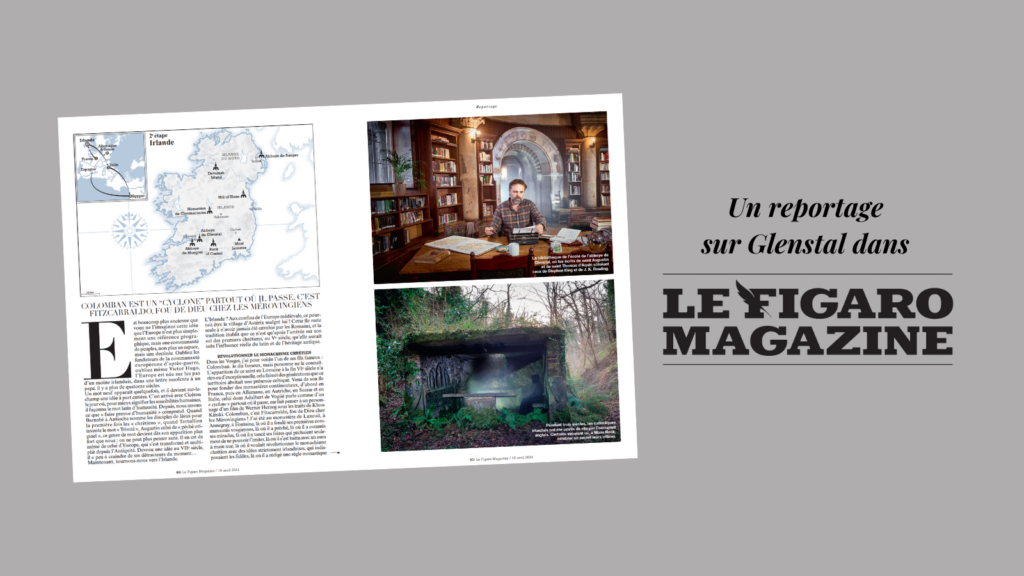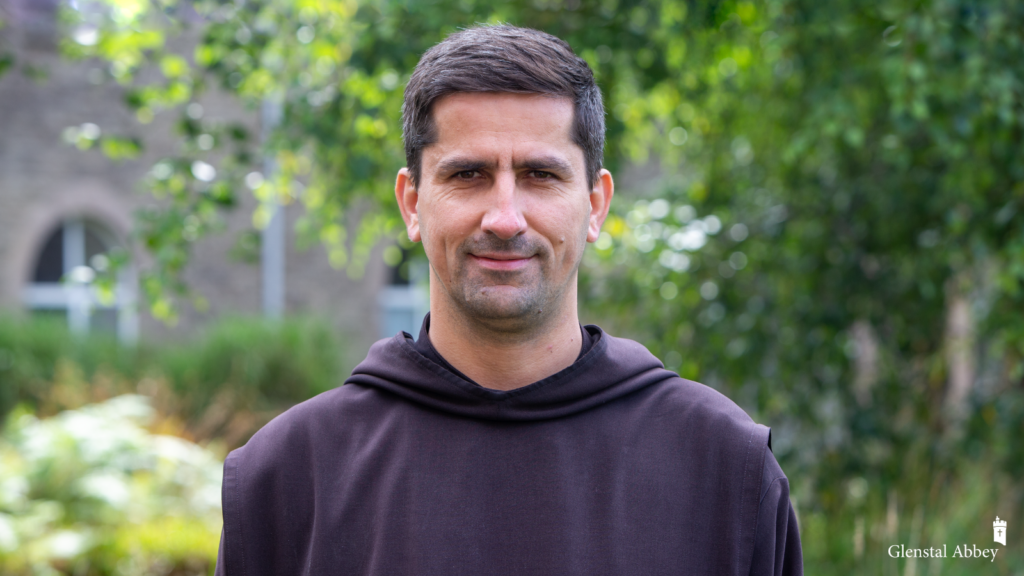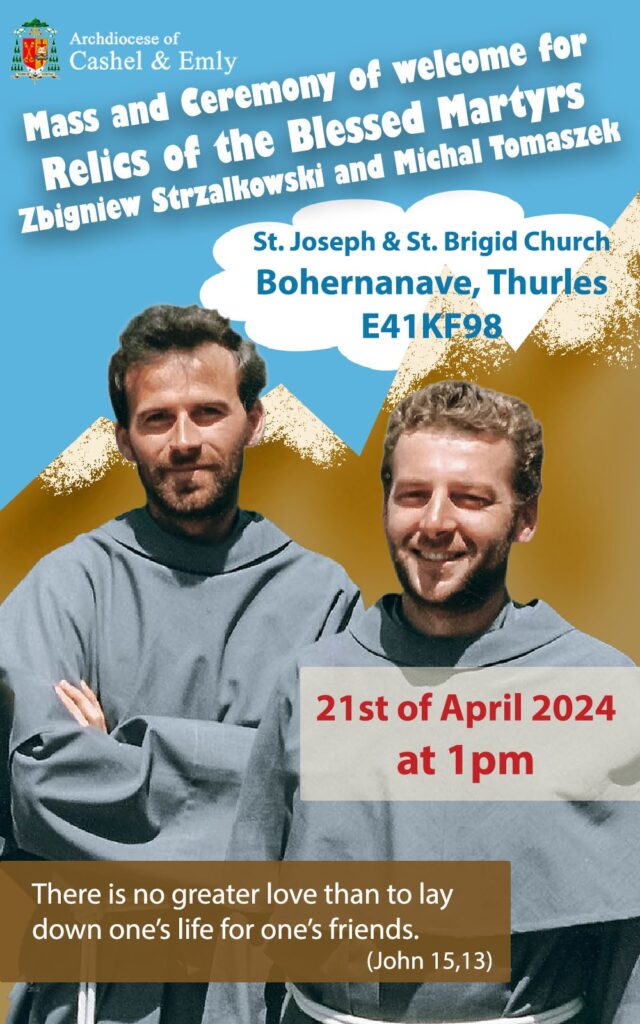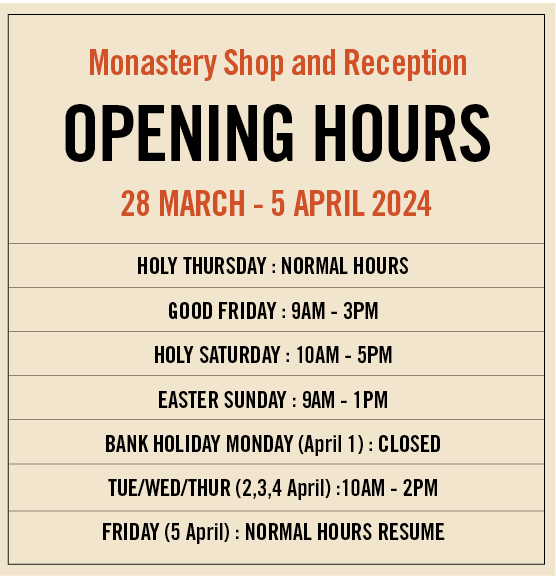Abbot Brendan OSB
As we listened to the account of God’s dream for the world in the Liturgy of the Word; could you feel the presence of the Risen Lord with us? Has this dream become a reality? The promises made to Abraham, Isaac, Jacob, Elizabeth and Zacheriah, Mary and Joseph, have they come true?
Mary of Magdala, Mary the mother of James and Salome, came to the tomb. St Cyril of Jerusalem calls Mary of Magdala the philochristos – the ‘lover of Christ’. But strong as she was, Mary of Magdala was almost broken as she approached the tomb. It was all too much. She was reduced to misery. Like all the others she misread the situation.
John’s gospel tells us she had been weeping in the garden. This seems to be a human pastime, starting with Adam and Eve. The three women didn’t realise that God’s plan had already become a reality.
These women expected to see a corpse wrapped in a sheet, instead they see a young man dressed in white. They expected to see a body lying in the tomb, instead they see a man sitting on the right: on whose right? Someone placed this young man on his right hand, saying to him: ‘Sit on my right’. Do we not remember the words of Jesus to the sons of Zebedee, “sitting at my right hand and my left, this is not mine to grant; this is for those for whom it has been prepared.”
“You are looking for Jesus of Nazareth”, said this man dressed in white, “he has risen, he is not here.” The place of deposition bears witness to this. The hour has come when the bridegroom has been taken away, just as he said.
There is one more line in this gospel passage which we never hear, it is always omitted. It says, “And the women came out and fled from the tomb, for trembling and amazement had gripped them. And they said nothing to anyone, for they were afraid.”
What an anticlimax! No wonder it’s omitted. They have just been told the most important news in all of history and what do they do? Nothing. They were afraid. I think this verse is actually more for us than for the women disciples.
Are we afraid of Jesus’ resurrection? Are we afraid of proclaiming it? Are we afraid to stand up for what is right and true in the world? Many of us in the church today are so afraid that we don’t even tell ourselves who we are anymore – the disciples of the Risen Jesus.
Yes, the problems of the world have not disappeared and life remains a struggle for many people, but Christ is Risen, the stone is rolled away from the entrance to our tomb, and we are the messengers of this truth.
Have you not heard, this is the night when a tsunami of grace is poured out, as it will be on Carole when she comes before the altar to receive the sacrament of confirmation.
So do not be afraid, listen to the voices of Mary of Magdala, Mary the mother of James and Salome. Listen to the voices of the peoples of Ukraine. Listen to the suffering people of Gaza and the Middle East. These are the voices crying out to the Risen Christ who stands among us and before whom one day every one of us must stand and ask for mercy. Christ is Risen and it is intolerable in our day that God’s children should be treated like this. Do not be afraid – proclaim the resurrection, proclaim the gospel!
Can you feel the presence of the Risen Christ among us? Can you hear what he is saying to us? We believe in the God of life and “He is going before you to Gallilee, there you will see him.” What shocked the disciples about the resurrection was not just that Jesus rose from the dead; they witnessed this before, Jairus’ daughter, the son of the widow of Nain, and of course, Lazarus. What was so shocking was that the resurrected Jesus did not come back from death as an avenger, but as the bringer of forgiveness. His pierced hand is forever raised against the flames of war, violence and vengeance and he says: Stop! ‘Peace be with you’. Such words break down the gates of hell. These are now our words, if we have the courage to use them.
Χριστὸς ἀνέστη! Ἀληθῶς ἀνέστη! (Khristós Anésti! Alithós Anésti!) Christ is Risen! He is Risen Indeed!





